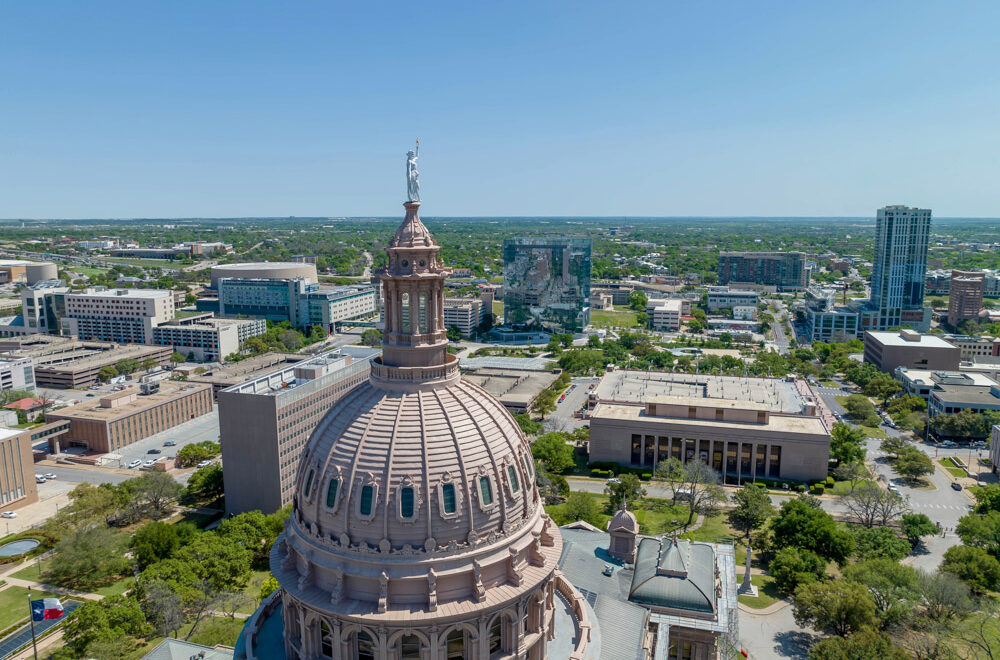Austin, Texas, with its vibrant business scene and beautiful natural surroundings, is an ideal place for commercial property owners to establish their businesses. Trees play a significant role in enhancing the aesthetic appeal and overall value of commercial properties in this area. However, as a property owner or manager, it’s essential to prioritize tree safety to prevent accidents, liabilities, and property damage. In this blog, we’ll provide you with a comprehensive tree safety checklist to help you maintain the health and safety of the trees on your commercial property in Austin, Texas.
Why Tree Safety Matters
Before diving into the checklist, it’s crucial to understand why tree safety should be a priority for commercial property owners in Austin.
1. Liability Mitigation: Neglecting tree safety can lead to accidents, property damage, and injuries. As a property owner, you may be held liable for any harm caused by unsafe trees on your property. Addressing tree safety can help mitigate potential legal issues.
2. Property Value: Well-maintained and healthy trees can significantly boost the value of your commercial property. Neglected trees, on the other hand, can decrease property value and deter potential tenants or buyers.
3. Environmental Benefits: Trees offer environmental advantages such as shade, improved air quality, and reduced energy consumption. By ensuring tree safety, you contribute to a healthier environment for your property and the surrounding area.
4. Aesthetics: Properly maintained trees enhance the aesthetic appeal of your commercial property, making it more inviting to customers, clients, and employees.
The Tree Safety Checklist
1. Regular Inspections
Regular tree inspections are the foundation of tree safety. Inspect your trees at least once a year, preferably in the early spring or late winter, to assess their health and identify potential hazards. Consider hiring a professional arborist for a thorough assessment. Feel free to contact Sid Mourning Tree Service if we can help in any way.
2. Pruning and Trimming
Proper pruning and trimming are essential for tree health and safety. Remove dead or diseased branches that pose a risk of falling. Trim branches that obstruct signage, walkways, or views. This not only enhances safety but also improves the overall appearance of your property.
3. Soil Health
Healthy soil is crucial for tree growth and stability. Ensure your trees receive adequate nutrients and water. Mulch around the base of trees to retain moisture and regulate soil temperature. Be aware of any signs of soil erosion, compaction, or poor drainage that could affect tree stability.
4. Pest and Disease Management
Monitor your trees for signs of pests or diseases. Early detection and treatment are key to preventing the spread of these issues. Consider implementing an integrated pest management (IPM) program to protect your trees without harming the environment.
5. Root Care
Pay attention to the root systems of your trees. Avoid compacting soil around the base of trees, as this can harm the roots and affect stability. Be cautious during construction or landscaping projects that may damage tree roots.
6. Tree Support Systems
For mature trees with structural issues or compromised stability, consider installing support systems such as cables or braces. Consult with an arborist to determine the most appropriate support measures for your trees.
7. Hazardous Trees
Identify and address hazardous trees promptly. A hazardous tree may have significant structural defects or be in a state of decline. If a tree poses a severe risk, it may need to be removed to ensure safety.
8. Storm Preparedness
Austin, Texas, is no stranger to severe weather, including storms and hurricanes. Make sure your trees are properly pruned to reduce wind resistance. Have an emergency plan in place to address tree-related damage after a storm, including securing fallen branches and addressing damaged trees promptly.
9. Tree Preservation During Construction
If you’re planning construction or renovation work on your property, take precautions to protect nearby trees. Implement measures to prevent soil compaction, root damage, and other construction-related impacts on tree health.
10. Signs of Tree Stress
Learn to recognize signs of tree stress, such as leaf discoloration, wilting, or premature leaf drop. Address these issues promptly to prevent further tree decline.
11. Property Boundaries
Be aware of your property boundaries and the location of trees in relation to neighboring properties. Avoid disputes and potential liabilities by ensuring that tree branches or roots do not encroach on adjacent properties.
12. Documentation
Maintain thorough documentation of all tree-related activities, including inspections, pruning, treatments, and removals. This documentation can be invaluable for liability protection and planning future tree care.
13. Consult with a Professional Arborist
While many aspects of tree safety can be addressed independently, it’s wise to consult with a certified arborist for expert guidance. Arborists can provide specialized knowledge and recommendations tailored to your specific property and tree species.
14. Local Regulations and Permits
Familiarize yourself with local regulations regarding tree care and removal. Austin, Texas, has specific rules and permitting requirements for tree preservation and removal, especially for protected tree species.
15. Emergency Response Plan
Develop an emergency response plan in case of tree-related incidents. This plan should include contact information for tree care professionals and procedures for addressing immediate safety concerns.
Ensuring tree safety on your commercial property in Austin, Texas, is not only a legal responsibility but also a wise investment in the long-term health and value of your property. By following this comprehensive tree safety checklist, you can mitigate risks, enhance the beauty of your property, and contribute to a safer environment for all.
Remember that tree care is not a one-time effort; it requires ongoing attention and maintenance. Regular inspections, proper pruning, and adherence to local regulations are key components of successful tree safety management. Additionally, don’t hesitate to seek the expertise of certified arborists when needed, as their knowledge can be invaluable in preserving the health and safety of your trees. Sid Mourning Tree Service has been a respected business in Austin and the surrounding communities for over 30 years. Please contact us for a free estimate.

